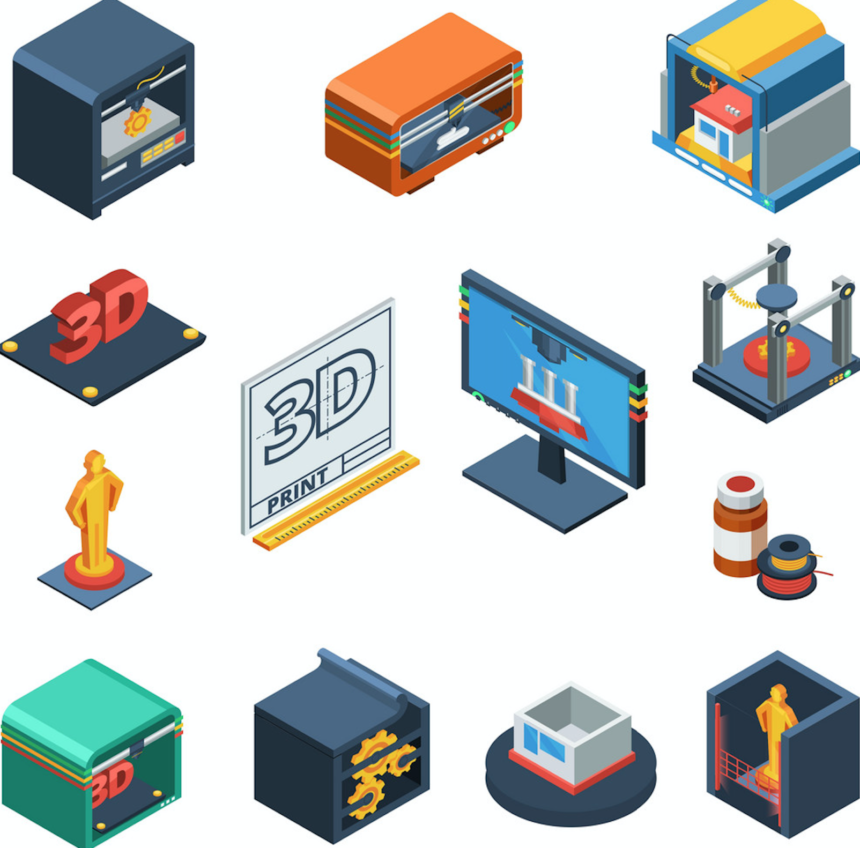Speed is vital in computer graphics and visualization, and structures like Bounding Volume Hierarchy (BVH) help make rendering and collision detection faster. Cubvh, the easy-to-use CUDA Mesh BVH Acceleration Toolkit, speeds up graphics tasks by simplifying BVH setup and movement using CUDA technology, making applications run quicker.
This is especially useful for real-time rendering and complex collision checks. This post explores Cubvh’s features, advantages, and practical uses, providing insights for developers, researchers, and graphics fans keen on maximizing the benefits of CUDA Mesh BVH Acceleration.
Understanding BVH In Graphics
What is BVH
Bounding Volume Hierarchy (BVH) is a tree structure that efficiently organizes geometric objects. Each node in the tree contains a group of objects or other nodes, aiding in tasks like collision detection and ray tracing.
Role Of BVH In graphics
BVH is pivotal in graphics, facilitating quick spatial queries to determine object interactions and light ray paths. Its application in animations, video games, and simulations enhances performance and realism by streamlining rendering processes.
Challenges In BVH implementation
Implementing BVH poses challenges, notably in balancing hierarchy depth and node object count. Dynamic scene updates are computationally intensive as object movements necessitate BVH recalculations for operational efficiency, especially in real-time scenarios for more insights on BVH in graphics.
Utilizing GPU Acceleration For BVH
GPU acceleration plays a crucial role in graphics. GPUs handle multiple tasks simultaneously, making them perfect for the intricate computations involved in BVH.
The utilization of GPUs ensures applications can deliver high performance even in demanding scenes. This transformative technology reshapes how BVH is integrated into modern graphics, resulting in quicker rendering and enhanced visual details.
Understanding BVH’s intricacies is key to fully leveraging its benefits and overcoming implementation hurdles. With advanced GPU acceleration tools like Cubvh, developers now have robust solutions to address these challenges effectively.
Exploring CUDA For Cubvh Acceleration
CUDA, short for Compute Unified Device Architecture, is a platform by NVIDIA that enables developers to utilize GPUs for various tasks. This technology enhances computations by allowing parallel processing, making complex calculations faster than just a CPU.
Impact Of CUDA On Graphics
The introduction of CUDA revolutionized graphics rendering and simulations, accelerating graphics algorithms for real-time rendering and intricate simulations. Tasks that took minutes can now be completed within seconds, leading to advancements in computer graphics.
Why Choose CUDA For Cubvh Acceleration?
CUDA’s parallel processing power is ideal for speeding up the creation and navigation of Cubvh structures. This is crucial for applications needing swift updates in dynamic scenes and real-time rendering. By leveraging CUDA for Cubvh acceleration, developers can achieve better performance, especially in industries like virtual reality, simulation, and film production.
CUDA has addressed the computational challenges linked with Cubvh, and tools like Cubvh have made it easier to utilize CUDA to enhance graphics performance. This amalgamation of technology and tools reshapes the possibilities of graphics rendering and simulation.

Introducing Cubvh: Accelerating Graphics With CUDA Mesh BVH Toolkit
What is Cubvh?
Cubvh, which stands for CUDA Mesh BVH Acceleration Toolkit, is tailored to harness CUDA’s power in mesh acceleration tasks. It simplifies creating and managing BVH structures on GPUs, enhancing graphics performance.
Key Features Of Cubvh
Cubvh offers rapid BVH construction and traversal optimized for NVIDIA GPUs, ensuring smooth handling of intricate scenes. It supports dynamic updates to BVH structures, which are crucial for scenes with moving objects, and seamlessly maintains high performance.
Moreover, Cubvh includes detailed documentation and examples, making it user-friendly for developers regardless of their familiarity with CUDA or BVH acceleration. This toolkit reduces the entry barrier for GPU-accelerated graphics programming, empowering users to enhance rendering times and application performance.
How Cubvh Enhances Graphics Applications
By incorporating Cubvh into graphics applications, developers can witness notable performance enhancements. This toolkit’s effective BVH management leads to quicker rendering and seamless animations.
Cubvh is especially advantageous for real-time rendering in video games and virtual reality. It also plays a vital role in scientific visualization and film production, ensuring precision and detail in graphics.
The introduction of Cubvh signifies a significant advancement in utilizing CUDA for graphics acceleration. It provides a robust solution for BVH acceleration challenges, making high-performance graphics more attainable and practical. With Cubvh, developers can explore new frontiers in computer graphics.
Prerequisites For Utilizing Cubvh
Before delving into Cubvh, there are a few prerequisites to remember.
- Firstly, having a basic understanding of CUDA programming is essential to grasp how Cubvh utilizes GPU acceleration for BVH tasks effectively.
- Additionally, access to an NVIDIA GPU is crucial as Cubvh is optimized for these GPUs to unleash its full potential.
- Lastly, installing the CUDA Toolkit on your system is necessary for developing and running applications accelerated by Cubvh.
Installation And Setup
Installing Cubvh is simple. Download the latest version of the toolkit from the official repository. Then, follow the installation guide provided to set it up seamlessly on your system.
Post-installation, ensure everything is set up correctly by running the example projects included with Cubvh. These examples showcase the toolkit’s capabilities and serve as a foundation for integrating it into your projects.
Integrating Cubvh Into Your Projects
To integrate Cubvh into your graphics application, include its library in your project. Refer to the documentation to understand the Cubvh API for effectively constructing and managing BVH structures.
Begin with basic tasks like creating a BVH for a static mesh and gradually progress to more complex scenarios like dynamic updates for real-time applications. Utilize the Cubvh documentation and examples for guidance and best practices throughout this process.
Advanced Techniques And Best Practices
Once you’re comfortable with Cubvh’s fundamentals, exploring its advanced features becomes crucial. Cubvh offers optimized functions for handling intricate scenarios such as massive scenes and dynamic objects, significantly enhancing application performance.
Mastering techniques like efficiently updating BVH structures for dynamic scenes without rebuilding them entirely is crucial. Cubvh provides incremental update mechanisms vital for real-time applications, boosting rendering speeds with practice and implementation.
Debugging And Enhancing Performance
For GPU applications like Cubvh, using NVIDIA’s Nsight tools for debugging and tuning performance is crucial. Regularly profiling your app helps pinpoint slowdowns, especially in BVH and Cubvh operations, while monitoring memory use and reducing data transfers between CPU and GPU keeps things speedy. You can craft fast, effective graphics apps by leveraging advanced Cubvh functions, optimizing BVH, fine-tuning performance, tackling common issues, and unlocking Cubvh’s full power.
Practical Use Of Cubvh
Cubvh’s real-world applications show its impact across various industries, enhancing performance in projects from gaming to scientific visualization. Cubvh boosts real-time rendering in video game development by optimizing BVH structures for smoother frame rates and immersive experiences.
Success Stories From Users
Developers and researchers praise Cubvh for streamlining GPU integration and improving performance efficiency. In computational physics and bioinformatics, Cubvh accelerates simulations and analyses, leading to scientific advancements. Users also appreciate Cubvh’s ability to handle dynamic updates efficiently.
Performance Analysis
Comparing performance metrics pre- and post-Cubvh implementation reveals faster rendering times and improved application responsiveness. These analyses highlight Cubvh’s role in advancing graphics programming and computational visualization capabilities.
Real-World Impact
Cubvh’s case studies showcase its transformative potential in enhancing performance and handling dynamic scenes, empowering innovation in graphics programming and computational visualization.
Future Directions For Cubvh
Looking ahead, Cubvh aims to improve performance, broaden GPU compatibility, and enhance user experience. Future updates will focus on advanced BVH algorithms for real-time rendering demands and simulations and optimize memory usage for dynamic scenes.
Community Contributions And Engagement
User feedback, bug reports, and feature suggestions are valuable for shaping Cubvh’s evolution. Developers can actively participate by contributing code, tutorials, or projects, fostering collaboration through forums and social platforms to drive innovative Cubvh applications.
Staying Involved With Cubvh
Users can access the latest Cubvh versions, documentation, and updates on the official GitHub repository to stay informed and engaged. Subscribing to the mailing list and following social media channels provide opportunities to contribute, stay updated on community events, and shape the future of Cubvh collaboratively.

FAQs
1. What is Cubvh?
Cubvh is the CUDA Mesh BVH Acceleration Toolkit for optimizing graphics performance and rendering.
2. Who should use Cubvh?
Ideal for developers, researchers, and enthusiasts in computer graphics and related fields seeking enhanced rendering capabilities.
3. Prerequisites for using Cubvh?
For effective utilization, you need a basic understanding of CUDA programming and access to NVIDIA GPUs with the CUDA Toolkit installed.
4. How does Cubvh enhance graphics applications?
By improving BVH construction and traversal, Cubvh accelerates rendering speed and efficiency in managing complex scenes.
5. Can Cubvh handle dynamic scenes?
Yes, Cubvh supports dynamic scenes with efficient updates to the BVH structure, which is suitable for real-time applications.
Conclusion
Cubvh, the CUDA Mesh BVH Acceleration Toolkit, transforms graphics programming and computational visualization by accelerating rendering, handling complex scenes efficiently, and enabling new possibilities for developers and researchers.
Community contributions drive its ongoing development, making it ideal for individuals in computer graphics, game development, and virtual reality, requiring basic CUDA knowledge and access to NVIDIA GPUs. Cubvh enhances graphics applications by expediting BVH processes, supporting dynamic scenes, and offering accessible documentation. Resources for learning can be found on the official GitHub repository, with contributions encouraged in various forms to foster innovation.







